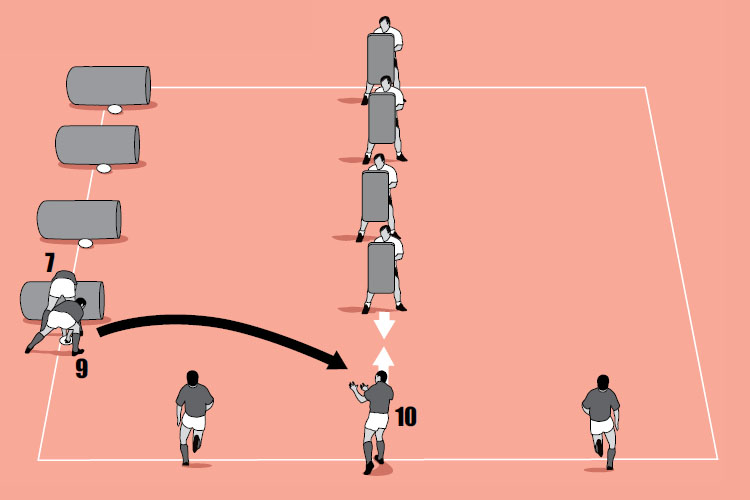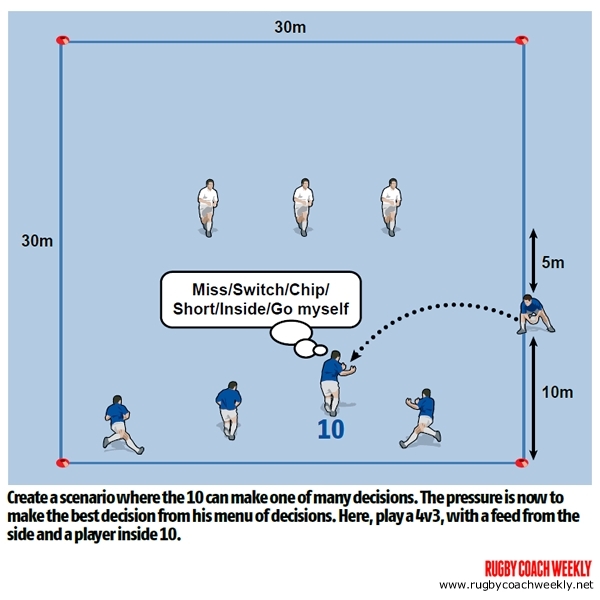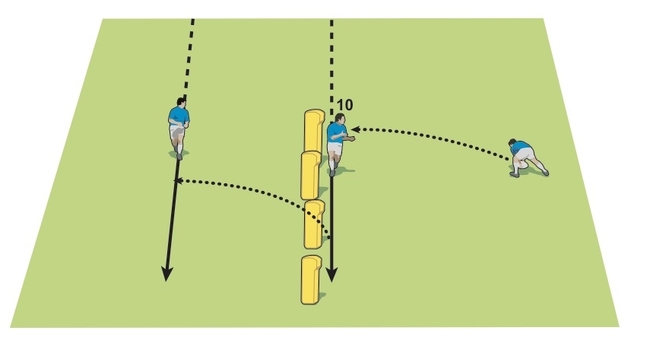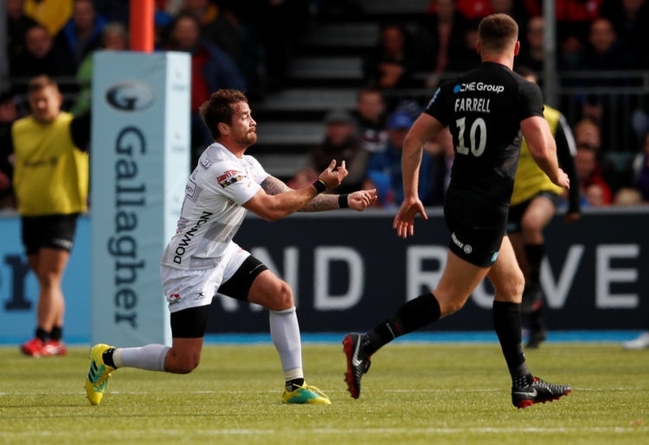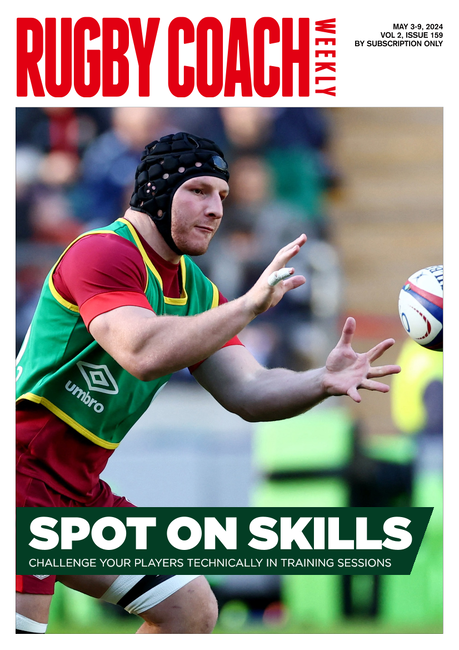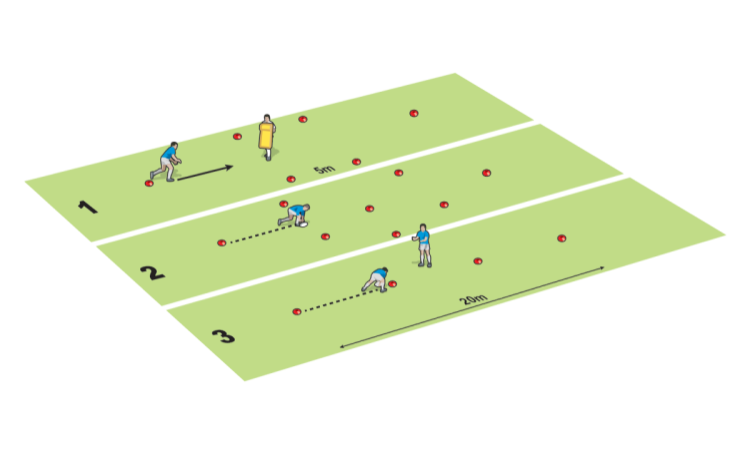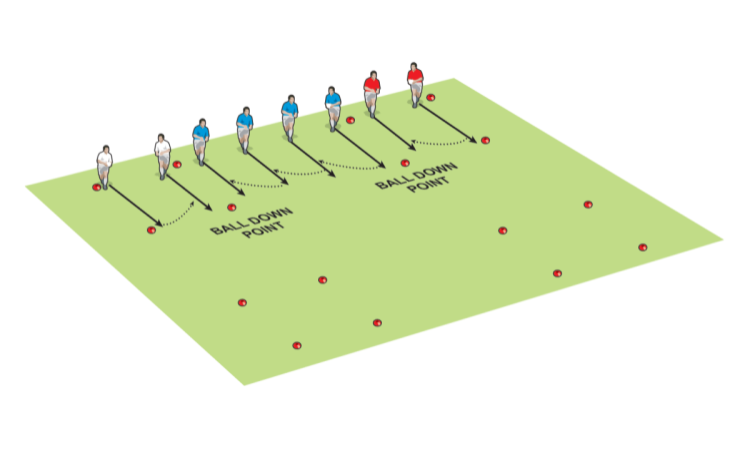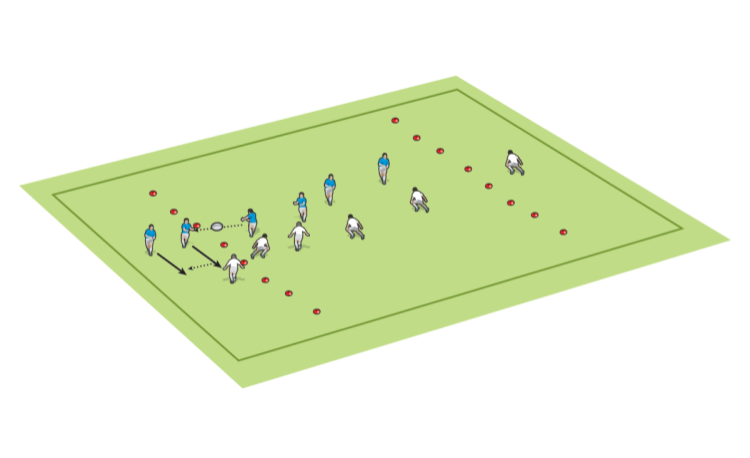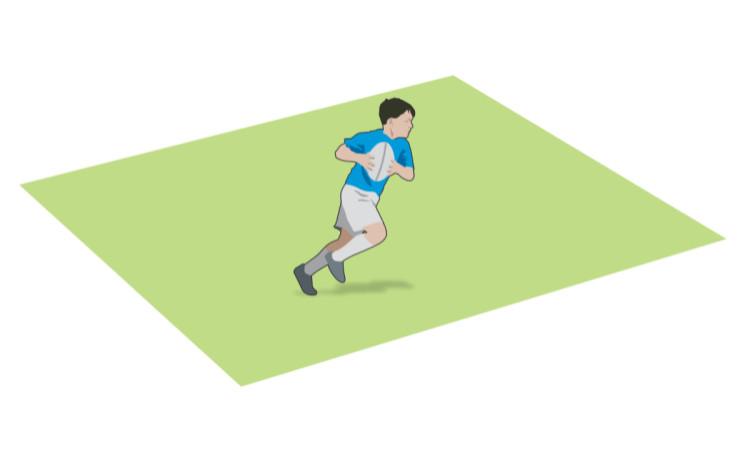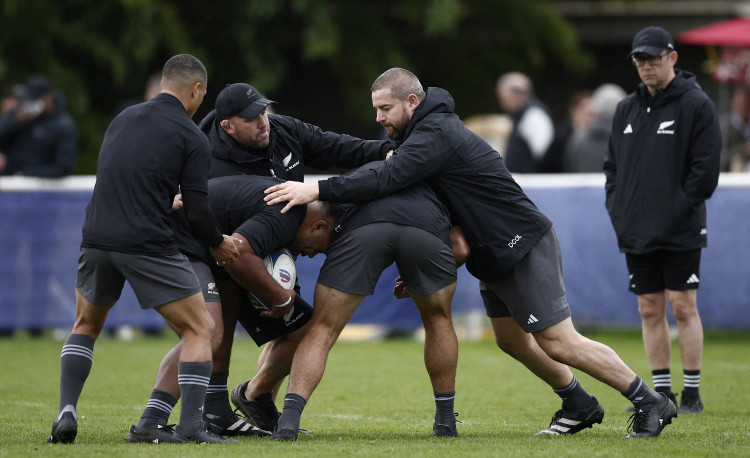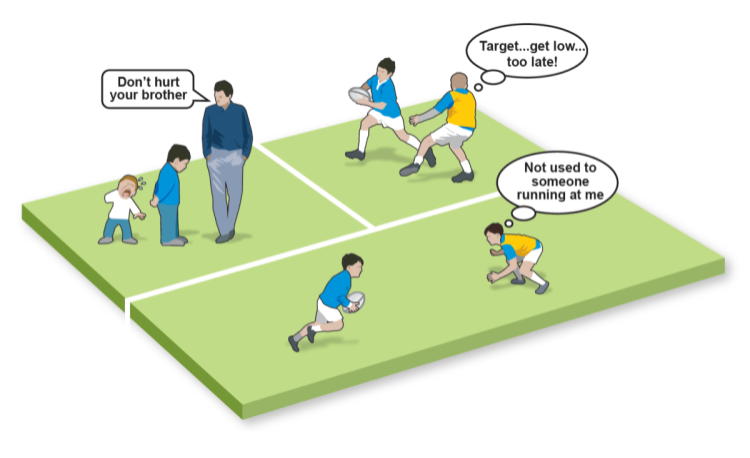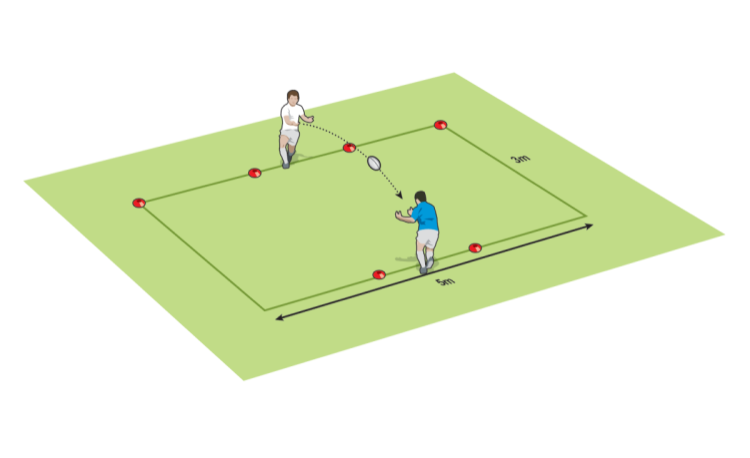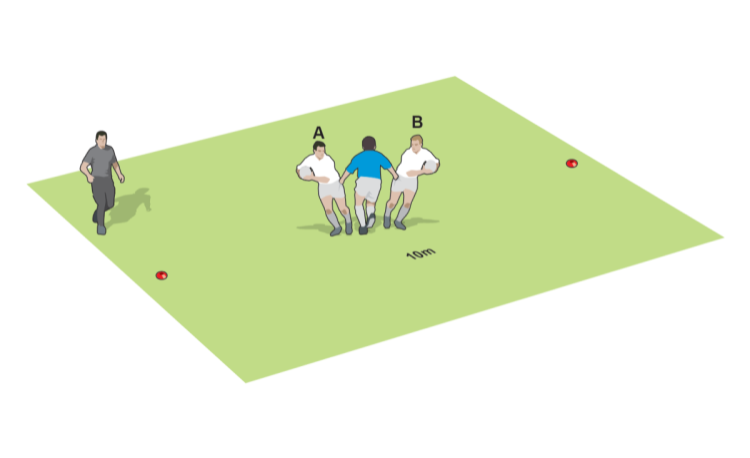You are viewing
1 of your 2 free articles
Whiteboard rugby: Attacking the line
Attackby Sam Larner
What is meant by attacking the line and how can you use this effectively in your tactics?
It is crucial for any first receiver to make at least one positive step forward when they receive the ball.
It can be tempting, especially if you are a fly-half (10) and you have called a move where the ball will be going wide, to immediately set off running wide. The problem with this approach is that it allows the defenders to drift over and cover the space.
Make at least one positive step forward towards the defence and you will preserve more of that wide space.
Filming your fly-half as they run some moves can help with this. It is likely that they don't know that they are immediately starting running wide.
Show them and it will probably lodge in their head more.
Alternatively, a game I have found successful, is to have a cone where your fly-half will receive the ball and another cone, about 2m further forward, that they need to reach before they can break to the outside.
Do that for a few minutes at the start of the session and you will find your fly-half is much more threatening when they receive the ball.
Here are some ideas to improve your 10's attacking play:
It is crucial for any first receiver to make at least one positive step forward when they receive the ball.
It can be tempting, especially if you are a fly-half (10) and you have called a move where the ball will be going wide, to immediately set off running wide. The problem with this approach is that it allows the defenders to drift over and cover the space.
Make at least one positive step forward towards the defence and you will preserve more of that wide space.
Filming your fly-half as they run some moves can help with this. It is likely that they don't know that they are immediately starting running wide.
Show them and it will probably lodge in their head more.
Alternatively, a game I have found successful, is to have a cone where your fly-half will receive the ball and another cone, about 2m further forward, that they need to reach before they can break to the outside.
Do that for a few minutes at the start of the session and you will find your fly-half is much more threatening when they receive the ball.
Here are some ideas to improve your 10's attacking play:
Newsletter Sign Up
Coaches Testimonials

Gerald Kearney, Downtown Las Vegas Soccer Club

Paul Butler, Florida, USA

Rick Shields, Springboro, USA

Tony Green, Pierrefonds Titans, Quebec, Canada
Subscribe Today
Be a more effective, more successful rugby coach
In a recent survey 89% of subscribers said Rugby Coach Weekly makes them more confident, 91% said Rugby Coach Weekly makes them a more effective coach and 93% said Rugby Coach Weekly makes them more inspired.
Get Weekly Inspiration
All the latest techniques and approaches
Rugby Coach Weekly offers proven and easy to use rugby drills, coaching sessions, practice plans, small-sided games, warm-ups, training tips and advice.
We've been at the cutting edge of rugby coaching since we launched in 2005, creating resources for the grassroots youth coach, following best practice from around the world and insights from the professional game.
More from us
© 2023 Rugby Coach Weekly
Part of Green Star Media Ltd. Company number: 3008779
We use cookies so we can provide you with the best online experience. By continuing to browse this site you are agreeing to our use of cookies. Click on the banner to find out more.
